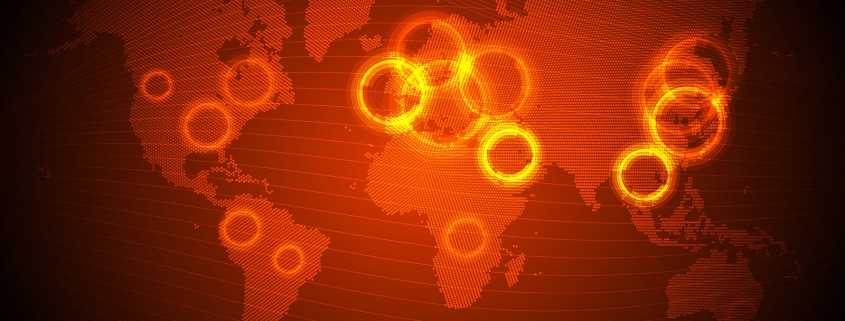The Israeli media had and still has a significant impact on the public, mainly due to the traditionally high consumption of news as well as other content by the Israelis, who love to be “in the know”. This is true to both the older audience, which watches TV and reads the printed newspapers, as well as to younger people who receive the information from the social networks: Facebook, Instagram, Twitter, and more.
Israel is also characterized by extreme mood swings: from grief to euphoria. When the first confirmed cases of COVID-19 returned to Israel from the Diamond Princess, the Japanese cruise ship infected with Coronavirus, the entire country watched them getting off the plane and transferred to the Sheba Medical Center. The audience also watched avidly the construction of a dedicated ward in the hospital, on top of media interviews held with them while they were still on the ship. In other words, news in Israel is invariably a reason for a strong expression of emotions. The Cruise Ship event has ushered the Israelis into the COVID-19 atmosphere. When the disturbing news from Italy started to arrive in Israel, reporting large numbers of sick people and deaths, the Israelis felt the threat was closing on them. It was no longer the Far East, but in Italy, a 3-hour flight away. The Israelis love Italy, Italian food, and Italian football. Many travel often to Italy to watch the famous operas or sail the canals of Venice.
From that point, the road to media hysteria was short, paving the way for government messages, led by Israel’s Prime Minister, Benjamin Netanyahu. Like him or not, everyone agrees Netanyahu is charismatic and has excellent verbal and public speaking skills.
Benjamin Netanyahu started appearing almost every night, in press conferences that achieved record rating. He, and the director-general of the Health Ministry, Moshe Bar Simantov, lost no time in depicting a horror picture of the future Israelis should expect. All the media channels in Israel operated their studios around the clock, holding live panel discussions with medical experts, epidemiologists, and infectious disease experts, intensifying the grim outlook provided by the PM. On this backdrop, when Mr. Netanyahu announced Israel should expect a death toll of 10,000 people, no one dared question his predictions. The hysteria was so intense that when the government announced a complete lockdown, prohibiting people from going to work or school; the large majority of the public has complied. Staying home was far better than going out to die, as the media kept pumping.
The panic exacerbated when it became known Israel does not have enough ventilators, hospital beds, masks, or other necessary medical equipment. One of the media peaks was with the reports on the MOSSAD pitching in to help procure the specialized testing swabs ahead of other countries, which joined the race for the scarce goods. By this time, people were terrified. The streets vacated overnight, and work meetings switched to Zoom. The PM kept fanning the hysteria with daily appearances, which now included not only dark outlooks but also demonstrations of the right way to blow one’s nose to prevent the virus from spreading.
Having had the privilege to run the election campaign of Netanyahu in 2009, in which he became Prime Minister (and has not stepped down since), I can say I know Mr. Netanyahu well. The stress he has communicated to the citizens during COVID-19 was genuine. He, too, felt stressed by the situation. This made his appearances very authentic and convincing for the public.
The combination of prompt government action and substantial public compliance resulted in a very low morbidity rate from COVID-19 and an even lower mortality rate (300 people across Israel at the time of writing this article, much lower than in most countries.)
An essential incentive for complying with the government’s instructions, rather than ignore them, was the government’s promises to compensate citizens who suffered the consequences of the economic lockdown. Indeed, salaried employees (who did not lose their jobs) are adequately compensated. However, no one compensates SMBs and the self-employed. The power of the media was clearly felt here as well. People who succeeded in securing a TV interview for themselves and shouted loudly enough received a response to their needs. The growing criticism of the meager financial aid has caused the government to panic and inject funds into the economy.

Roni Rimon, Strategic Consultant, Owner and Partner at Rimon-Cohen & Co.
However, the government has not done so methodologically. Rather, it has acted based on media pressure. As a result, the stronger and louder received more while the small businesses and freelancers are still down and out, left on their own to make ends meet. Yet another outcome of the media pressure was that schools, restaurants, shops, and malls opened earlier than in the rest of the world.
As I write this, there is an unfortunate flare-up in the number of confirmed COVID-19 cases in Israel. Fearing a “second wave,” the government has halted some planned alleviations, such as the permit to reopen the theatres and concert halls. At the same time, the government does not dare to reinstate lockdown measures. Again, this is because of the impression created in the media that the government had gone too far with the initial hysteria and intimidation of the public, which led to an economic recession of unimagined scope. My estimate is that even if the second wave of COVID-19 develops in Israel, the citizens will not be as disciplined as in the first time.
Accordingly, the media too will not go out of its way to help the government scare the public as it did in the first round. Yes, the media too has learned a lesson: Caution? By all means. Hysteria: no more.
Rimon-Cohen & Co. PR is an official member of the GlobalCom PR Network.

